How do I edit the ChartString in my Expense Report?
How to edit the ChartString in a Expense Report
What is it?
A ChartString is a series of ChartFields that track information about your expense and the funding associated with it. The default ChartString from your Concur Profile is automatically populated when you create an Expense Report. Refer to the CU Concur Tip: How do I enter a Default ChartString in my Concur Profile?You can edit the ChartString information in an individual Expense Report if it needs to be different from the default. The default Department information from your Profile that is pre-populated from PAC can also be edited in your Expense Report. In addition, the ChartFields in Expense Reports can be modified by the Financial Approver, if necessary.
Who’s it for?
Anyone who uses Concur to submit Expense Reports.
How do I do it?
Log in to Concur, click Expense tab and click Create New Report..
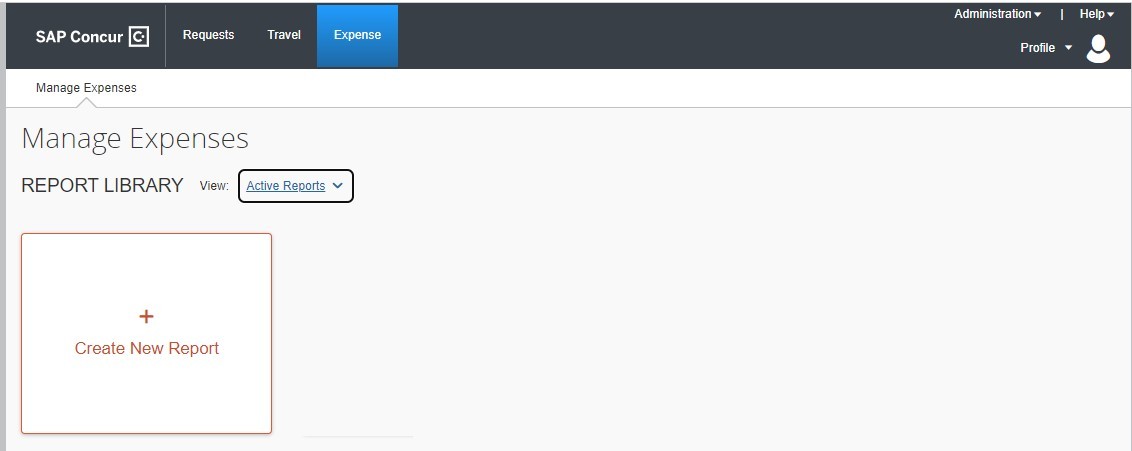
The Create New Report screen appears.
Important Note: The values displayed in the graphic below are for example purposes only. Be sure the Departmental and ChartField values are relevant and correct for your Expense Report.
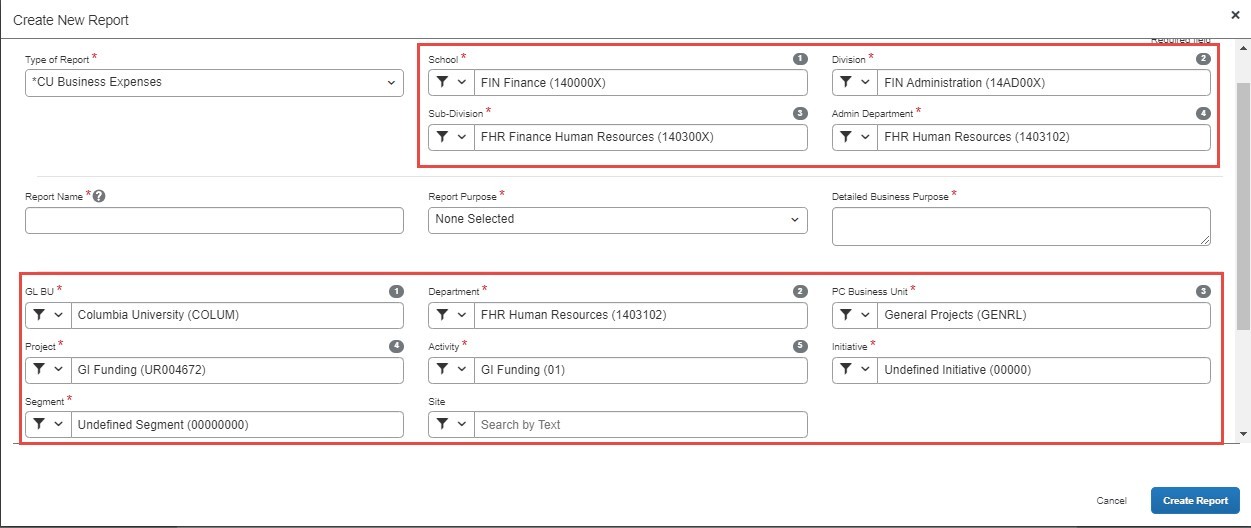
At the top of the screen, the School, Division, Sub-Division and Admin Department default from your Concur Profile and impact workflow routing. The Division will drive workflow routing to Senior Business Officers, when applicable. The Admin Department will drive approval workflow routing to the Initial Reviewer, when applicable.
The section below displays your default ChartFields. The GL BU, Department, PC Business Unit, Project, and Activity ChartFields drive workflow routing to the Financial Approver.
Editing Departmental Information
Notice that each Departmental field is numbered. The values for each field are a connected list and need to be entered in sequential order.

1. In the first field you are updating, click the dropdown and select Either so you can search for the correct matching value using either Text (name) or Code (alphanumeric code).
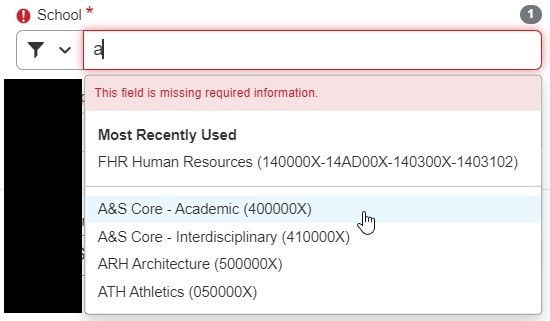
3. Select the matching value from the list under the Most Recently Used section. Do not select from the most recently used list. If your Most Recently Used list is long, you will need to scroll to view and select the correct matching value.
4. Repeat the steps above for the other Departmental fields in sequential order.
Editing ChartField Information
Notice that each ChartField is numbered. The values for each field are a connected list and need to be entered in sequential order and only budget valid ChartFields are available.

1.In the first ChartField you are updating, click the dropdown and select Either so you can search for the correct matching value using either Text (name) or Code (alphanumeric code).
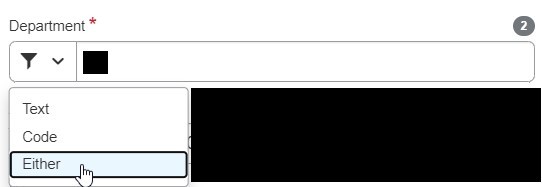
2. Type your search. As you type, matches appear below the Most Recently Used list. Only budget valid ChartFields are available. In the Project field, if you do not see a matching Project, you should check to ensure there is budget available
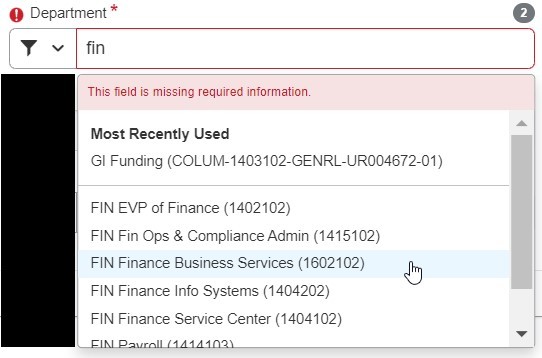
3. Select the matching value from the list under the Most Recently Used section. Do not select from the most recently used list. If your Most Recently Used list is long, you will need to scroll to view and select the correct matching value.
4. Repeat the steps above for the other ChartFields in sequential order.
After making your desired edits, complete the required information in the Report Details form and click Create Report to begin adding expenses to your Expense Report.